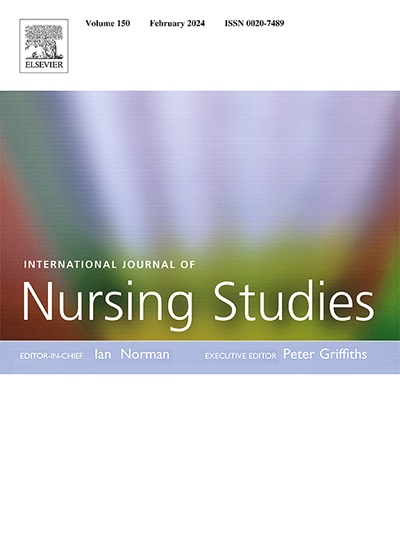不同频率呼吸机回路改变对呼吸机相关性肺炎发病率的影响:一项网络荟萃分析
IF 7.1
1区 医学
Q1 NURSING
引用次数: 0
摘要
目的应用网络meta分析,探讨不同频率呼吸机回路改变对通气相关性肺炎发生的影响。方法系统检索中英文数据库,收集有关呼吸机回路改变与呼吸相关性肺炎关系的符合条件的研究。采用R软件汇总各换药频率下的肺炎发病率,采用Stata软件进行网络meta分析,确定最佳换药频率。结果共纳入23项研究,包括9项不同频率的呼吸机回路变化。荟萃分析显示,合并肺炎的发生率为25%。网络荟萃分析显示,与1天(优势比(OR) = 0.26, 95%可信区间(CI)[0.10, 0.69])、2天(OR = 0.41, 95% CI[0.20, 0.87])、4天(OR = 0.17, 95% CI[0.04, 0.72])和14天(OR = 0.11, 95% CI[0.02, 0.50])相比,3天的循环改变显著降低了通气相关肺炎的发病率。直接荟萃分析显示,3天回路变化与1天、3天回路变化与14天、7天回路变化与14天无显著差异。概率排序显示,3天更换呼吸机回路的频率是最佳干预的概率最大,其次是5天和7天。结论meta分析显示,每3天更换一次呼吸机回路效果最好,但每周更换一次呼吸机回路也有积极的预防作用,对呼吸相关肺炎的发生无显著影响。这些发现结合现有证据表明,应避免呼吸机回路的高频变化。本文章由计算机程序翻译,如有差异,请以英文原文为准。
Effects of different frequencies of ventilator circuit changes on the incidence of ventilator-associated pneumonia: A network meta-analysis
Objective
To investigate the effect of different frequencies of ventilator circuit changes on the occurrence of ventilation-associated pneumonia using network meta-analysis.
Methods
Chinese and English databases were systematically searched to collect eligible studies on the relationship between ventilator circuit changes and ventilation-associated pneumonia. The incidence of pneumonia for each change frequency was pooled using R software, and network meta-analysis was performed using Stata software to determine the optimal change frequency.
Results
A total of 23 studies were included, including nine ventilator circuit changes with different frequencies. The meta-analysis showed that the combined incidence of pneumonia was 25 %. Network meta-analysis showed 3-day circuit changes significantly reduced ventilation-associated pneumonia incidence compared with 1 day (odds ratio (OR) = 0.26, 95 % confidence interval (CI) [0.10, 0.69]), 2 days (OR = 0.41, 95 % CI [0.20, 0.87]), 4 days (OR = 0.17, 95 % CI [0.04, 0.72]), and 14 days (OR = 0.11, 95 % CI [0.02, 0.50]). Direct meta-analysis showed no significant difference in 3-day circuit changes versus 1 day, 3-day circuit changes versus 14 days, and 7-day circuit changes versus 14 days. The probability ranking indicated that a 3-day frequency of ventilator circuit changes had the greatest probability of being the optimal intervention, followed by 5 days and 7 days.
Conclusion
The meta-analysis showed that ventilator circuit changes every 3 days had the best effect, but once a week also showed a positive preventive effect, with no significant effect on ventilation-associated pneumonia occurrence. These findings combined with existing evidence indicate that high frequency changes in the ventilator circuit should be avoided.
求助全文
通过发布文献求助,成功后即可免费获取论文全文。
去求助
来源期刊
CiteScore
15.00
自引率
2.50%
发文量
181
审稿时长
21 days
期刊介绍:
The International Journal of Nursing Studies (IJNS) is a highly respected journal that has been publishing original peer-reviewed articles since 1963. It provides a forum for original research and scholarship about health care delivery, organisation, management, workforce, policy, and research methods relevant to nursing, midwifery, and other health related professions. The journal aims to support evidence informed policy and practice by publishing research, systematic and other scholarly reviews, critical discussion, and commentary of the highest standard. The IJNS is indexed in major databases including PubMed, Medline, Thomson Reuters - Science Citation Index, Scopus, Thomson Reuters - Social Science Citation Index, CINAHL, and the BNI (British Nursing Index).

 求助内容:
求助内容: 应助结果提醒方式:
应助结果提醒方式:


